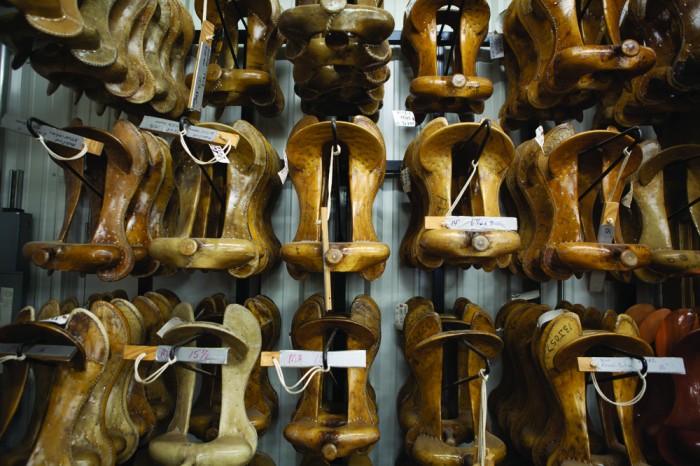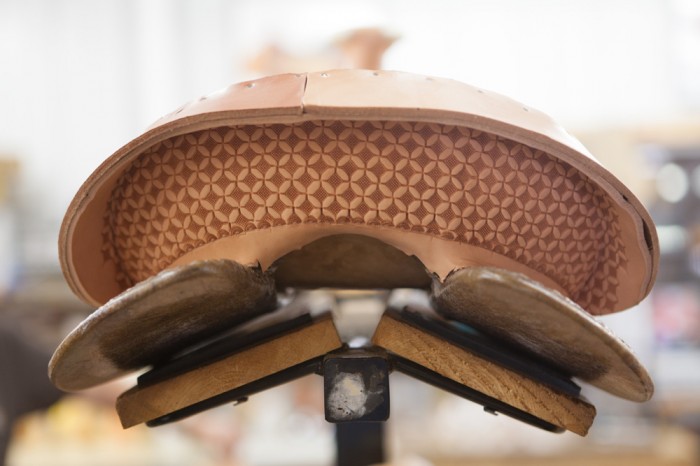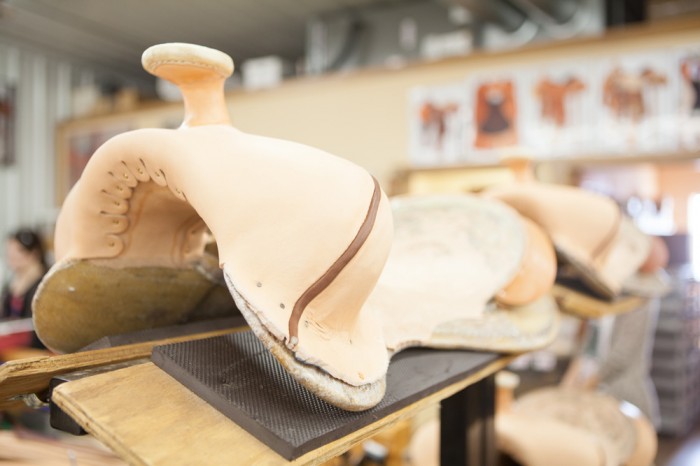The Saddle Doesn’t Fall Far from the Tree
0The smell of fresh cut leather welcomes you as you enter the saddle shop. The sound of leather craftsmen tooling and carving intricate designs gives the room its own beat. Brand new rolls of leather awaiting their metamorphosis appear as a stark contrast to the old saddles stacked in a corner that need a caring hand to bring them back to life. All around you are pieces of tack and belts in different stages of their creation. It’s a peaceful environment, the type that makes you want to grab a sweet tea and a seat to watch the transformations take place.
Experienced saddle makers, Billy and Lou Cogsdil, work closely with the NRS Pro Series Development Team to create some of the best fitting, riding and looking saddles in the industry. When building a Pro Series Saddle, every aspect of the saddle is built, from scratch, with the utmost attention and care. One of the most important aspects of a saddle is, undoubtedly, the saddle tree.
Scott Miller, Tack Buyer for NRS, says, “The fit of a saddle is just as important as the skill of the rider. An ill-fitting saddle will make the horse sore, ultimately leading to behavioral issues that won’t be resolved with horsemanship.”
To guarantee a proper fitting saddle, every customer ordering an NRS Pro Series Saddle can have their tree custom fitted to his or her horse. Billy has a total of 10 different size trees available to sit on the back of a horse to find the size that best fits. That tree can then be customized further to fit even more exactly, as well as to meet the requirements for the discipline the saddle will be used for.
The most common trees used are, what NRS calls, the #1 and #2 fit. The #1 fit bars sit fairly straight along the back of the horse, while the #2 fit bars concave away from the horse in the front towards the swell which will fit horses with broader withers. This shape will also help prevent the saddle from “dipping” too far forward.
All NRS Pro Series saddle trees are made from pine wood. Pine is flexible so it will flex with the horse’s back and movement before breaking. The wood is then covered in fiberglass and rawhide to protect and strengthen. Each tree is cut from a computer in one solid piece. This ensures that each side of the tree is of equal dimensions up to .0001 of an inch. This kind of accuracy would be impossible to achieve from hand cutting a tree with a tool such as a lathe.
Cogsdil believes that the most common problem with most trees is how they fit the middle of the back. “When I fit a saddle, I look at the whole saddle from front to back, not just the withers,” he says.
When the tree sits correctly from the withers to the swell and cantle, the weight of the rider is evenly distributed. Having weight unbalanced along the horse’s back creates pressure points and soreness.
“My philosophy is wider is not always better. If you have a tree that is too wide for your horse, you end up over padding and creating a ‘roll effect,’ which can be a potentially dangerous situation.” Cogsdil explains that a “roll effect” is when there is so much padding that, no matter how tight the girth is, the saddle can slip and roll to the side. This is especially true in sports where the horse is pulling hard in a certain direction off the saddle horn. The saddle needs to be secure so the rider doesn’t fall and so the shock is absorbed equally over the horse’s back.
Cogsdil suggests a 100% wool blanket against the horse’s back and a 3/4” to 1” thick felt pad under the saddle. The blanket will wick away moisture, keep the horse cooler than a neoprene option. The pad acts as an added shock absorber.
The NRS Saddle Shop holds to the idea that “If you can dream it, we can build it.” Aesthetics and fit for the rider are fairly easy to accomplish, but proper fit for the horse will ultimately provide the difference a competitive horseman is looking for. Cogsdil sums it up perfectly by saying, “At the end of the day our horse is an athlete. If he isn’t comfortable, he can’t perform at his best.”
If are interested in building your customized NRS Pro Series Saddle, please call 940-627-3949.





